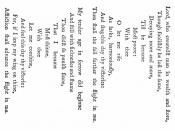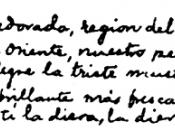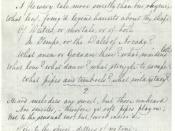The urn is portrayed, in elevated language as a dignified and silent form, suitable for this horation ode comprised. It is written in iambic pentameter which lends the piece a familiar, flowing rhythm. The tone is both musing and meditative. The poem is an apostrophe as the speaker addresses the object directly, but the word 'urn' is only used in the title. The effect of this is to focus the reader's attention on what is represented rather than the physical form. The rhyme scheme is a formal ABAB CDE for the first seven lines of each stanza, however the remaining three lines seem to break from this formability as the scenes depicted on the urn break from the pure lines of the object.
The first line introduces the metaphor of the urn as a 'still unravish'd bride'. (1.1) There is a dual meaning to the word 'still' which can refer to both time and lack of motion.
There is the interesting paradox of married yet virginal. The metaphor changes in the second line to a 'foster child'. (1.2) The urn is both wedded to and adopted by time and silence. It is described as a 'sylvan historian', a recorder of history, stressing its link with the past. It is through the questioning of the urn that the reader learns of the images that have captivated the speaker to the extent that he describes them as superior to his poem. He appears unsure as to whether the figures on the vase are Gods or mortals, which again emphasizes the beauty of the figures. The use of alliteration in 'silent and slow time' and 'leaf-fring'd legend' add to the harmonious tone and contrasts with the discord of the next lines. The word are of two syllables or less and the use of...



Johnjjp
wow. What can I say! Thanks very much, as an admirer of your essays that means a lot. Will run around the room hollering in triumph <g>
6 out of 6 people found this comment useful.